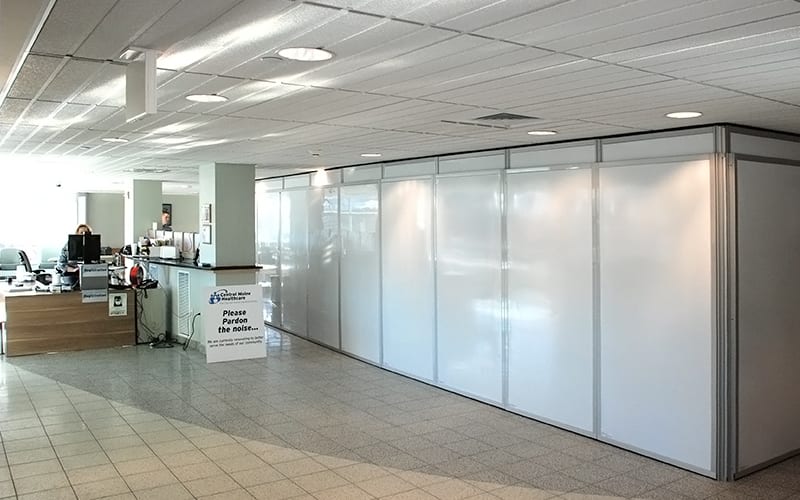
Infection control isn’t just a box to check during hospital renovations — it’s a critical, regulated process that starts well before the first wall comes down. Yet too often, Infection Control Risk Assessments (ICRA) are treated as an afterthought, putting patient safety, staff workflows, and even project timelines at risk.
As hospitals adapt to stricter standards like ICRA 2.0™, it’s more important than ever for contractors, facilities managers, and infection preventionists to align early. In this post, we break down how to plan smarter using ICRA-certified construction barriers, avoid common missteps, and reduce risk from day one.
Bonus: Download our ICRA 2.0™ Adoption guide for real-world survey insights and best practices from leading facilities teams.
Why Construction Barriers Matter for Infection Control
During hospital renovations, construction barriers are a critical infection prevention measure. These barriers help stop the spread of airborne contaminants, protect patients, and minimize disruption in active care environments.
ASHE’s ICRA 2.0™ process now requires that infection prevention be considered from the very beginning — guided by a Safety Risk Assessment (SRA). The SRA helps determine how construction may impact vulnerable patients, workflows, utilities, and life safety systems — and informs the required level of precaution under ICRA.
ICRA 2.0: What’s New in the Risk Matrix?
ICRA 2.0 retains the four levels of construction activity (Types A–D), but now aligns them with five levels of precaution — Classes I through V — based on patient risk group and scope of work.
| Activity Type | Examples |
| Type A | Minimal work (e.g., inspections, painting without sanding) |
| Type B | Low-dust work (e.g., cabling, cutting walls, ceiling tile removal) |
| Type C | Moderate construction (e.g., debris removal, ductwork) |
| Type D | Major renovation or demolition with long duration and high dust generation |
These are cross-referenced with patient risk groups (Low to Highest) to determine the appropriate precaution level.
Precaution Class V: The Highest Standard of Containment
Under ICRA 2.0™, Class V is the highest level of infection control required. It applies to the most vulnerable patient populations and the most disruptive construction activities.
Precaution Class V requires:
- Dual barrier systems
- Continuous negative air pressure monitoring
- Fully sealed anterooms or vestibules
- HEPA-filtered exhaust
- Rigid, airtight, fire-rated containment systems
STARC Walls: Built for Class V Compliance and Beyond
STARC’s RealWall™ and FireblockWall™ systems are engineered to exceed ICRA Class IV and V standards, offering:
- Airtight seals with top/bottom gaskets and telescoping panels
- Noise reduction up to 50% — minimizing patient disruption
- Tool-free installation — deploy 100 linear feet in under an hour
- Reusability — far superior to single-use drywall
Whether you’re working in active patient care areas or preparing for a high-risk renovation, STARC’s systems provide the speed, safety, and compliance your project demands.
Download our ICRA 2.0™ Adoption guide. Learn how hospitals and contractors are adapting to the latest infection control standards — with expert commentary, survey insights, and implementation best practices.

